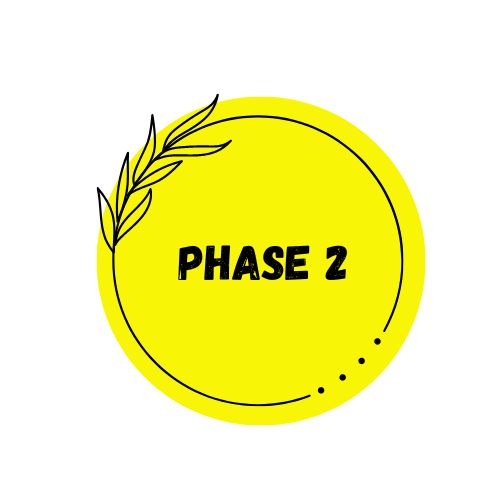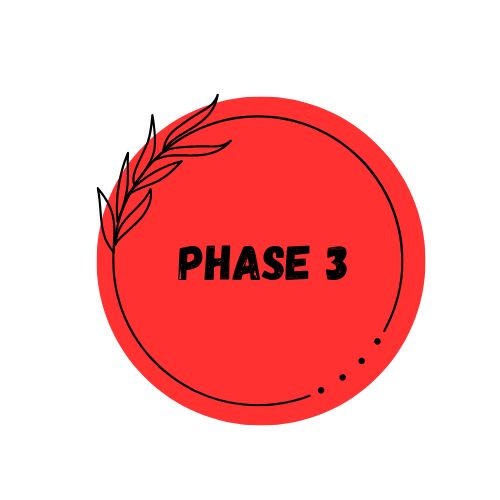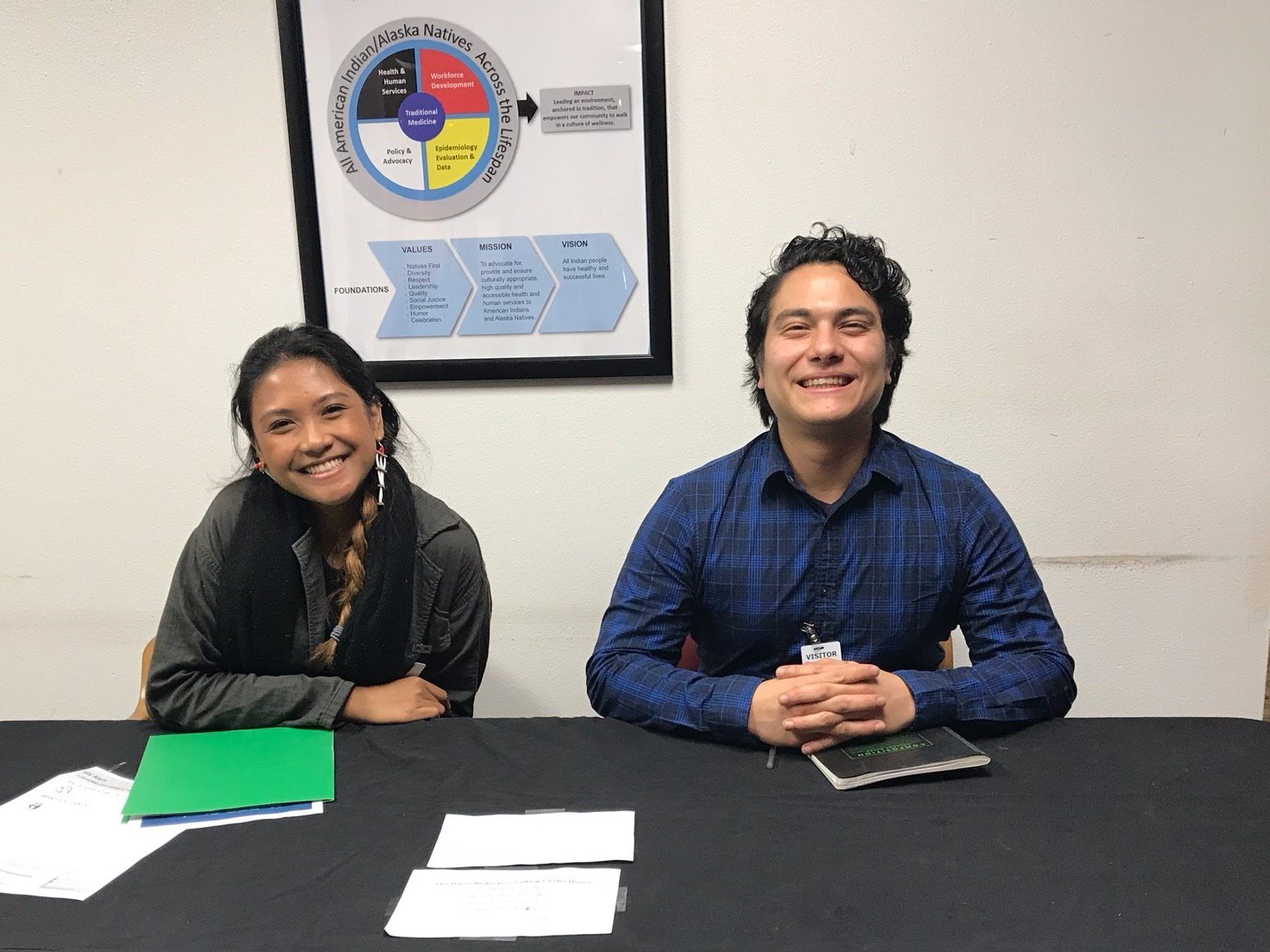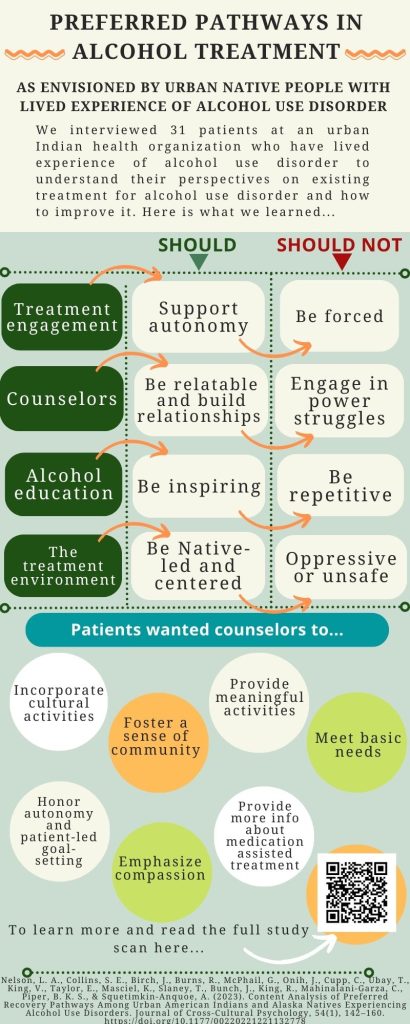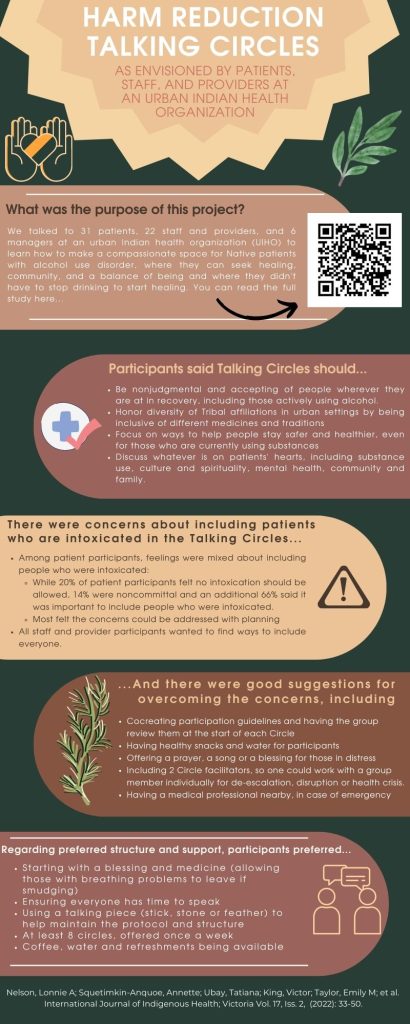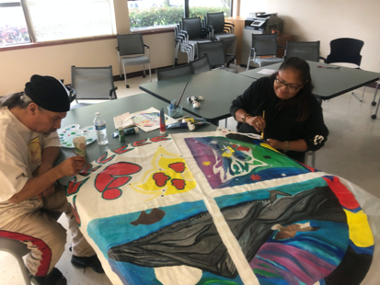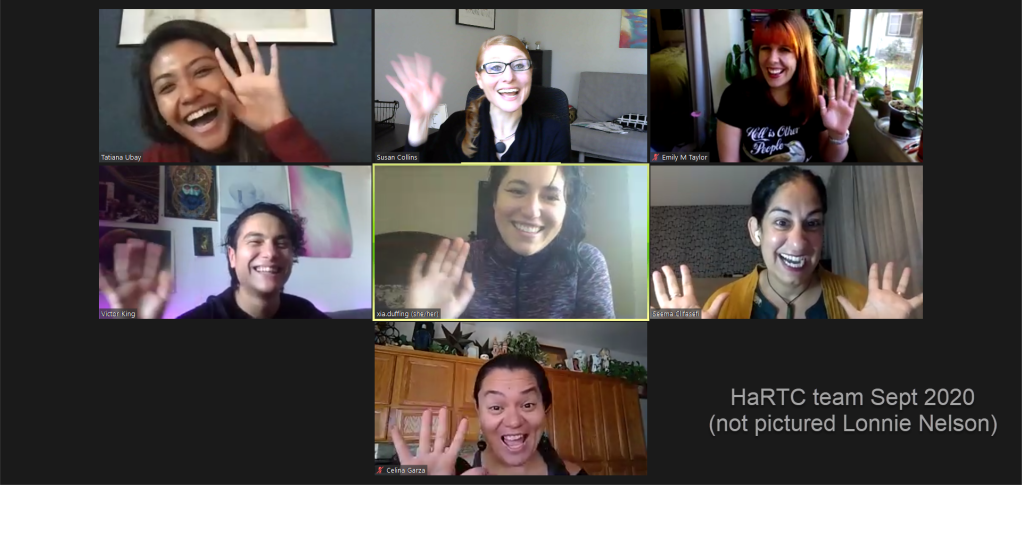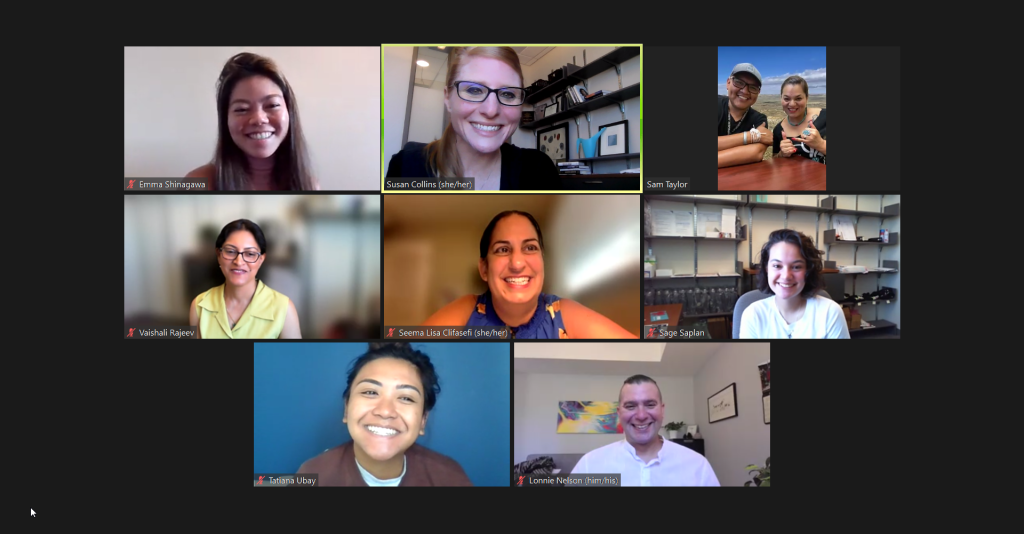“We are going to find each other. Heal each other”
– Lovella Black Bear (Lakota), Community Advisory Board Member
The Harm Reduction Talking Circles (HaRTC) project started when community members asked researchers at Washington State University (WSU) and the University of Washington (UW) to offer substance-use recovery pathways that honored their Indigenous traditions. Most requested was the integration of the North American Indigenous practice of Talking Circles with harm reduction, a low-barrier approach to substance-use treatment that does not require sobriety. After a small but successful pilot project in 2015, a larger group came together to continue this effort, including researchers at WSU and UW; Indigenous community members who have lived experience of alcohol use disorder; and traditional health professionals, staff and management at the Seattle Indian Health Board (SIHB). We were scheduled to start our in-person study of the HaRTC in March 2020, which changed the course of our work very dramatically. A silver lining was that the pandemic pushed us to expand our efforts with partners and communities far beyond the Seattle area. We are now evaluating HaRTC as a virtual healing pathway for Indigenous people who meet criteria for alcohol use disorder all over the US. Earlier stages of the HaRTC project were funded by the National Institutes of Health and later stages by WSU research funds. We would like to thank our partners and community members for all their support of this effort.
Phase 1
Phase 1 was successfully implemented and completed in spring of 2019. Phase 1 involved interviews and focus groups with American Indian and Alaska Native patients with lived experience of AUD as well as traditional health professionals, medical providers, staff and management at the Seattle Indian Health Board (SIHB).
After providing written informed consent, participants (N=31) were asked questions about alcohol treatment they had experienced to date and suggestions for its re-visioning, their perceptions of harm reduction, their interest in Talking Circles as a means of community-led and culturally aligned healing, and ideas to tailor the HaRTC and AUD treatment more broadly to meet the needs of patients at SIHB. These data were compiled and qualitatively analyzed to shape the HaRTC in Phase 2. Resulting from this work, we successfully published two scientific manuscripts on these findings in the Journal of Cross-Cultural Psychology and the International Journal of Indigenous Health. See our infographics on these studies below:
- Nelson, L. A., Collins, S. E., Birch, J., Burns, R., McPhail, G., Onih, J., Cupp, C., Ubay, T., King, V., Taylor, E., Masciel, K., Slaney, T., Bunch, J., King, R., Piper, B. K. S., & Squetimkin-Anquoe, A. (2023). Content analysis of preferred recovery pathways among urban American Indians and Alaska Natives experiencing alcohol use disorders. Journal of Cross Cultural Psychology, 54, 142-160. https://doi.org/10.1177/00220221221132778
- Nelson, L. A., Squetimkin-Anquoe, A., Ubay, T., King, V., Taylor, E. M., Masciel, K.*, Black Bear, L., Buffalomeat, S., Duffing-Romero, X., Garza, C. M., Clifasefi, S. L., & Collins, S. E. (2022). Content analysis informing the development of adapted harm reduction Talking Circles (HaRTC) with urban American Indians and Alaska Natives experiencing alcohol use disorder. International Journal of Indigenous Health, 17(2), 33-50. https://doi.org/10.32799/ijih.v17i2.36677
Phase 2
Phase 2 was successfully completed in fall 2019 but was necessarily revisited in the spring 2020 to accommodate a shift to virtual procedures during the COVID-19 pandemic. In this phase, a community advisory board (CAB), which comprised a) SIHB patients with Native heritage and lived experience of AUD, b) academic researchers, c) traditional health professionals, and d) staff and management at SIHB, was assembled, meeting once a month.
Together, members of the CAB integrated, interpreted and used the information gathered in Phase 1 to shape the research methods and procedures and to tailor HaRTC to meet the needs of patients at SIHB. After the initial completion of this phase, the pandemic interrupted our progress as Seattle became ground zero for the first COVID-19 outbreak. When our community-based partner’s site closed down to external research, we revisited Phase 2 with CAB members and our community partners. After much discussion, we decided to transform HaRTC from fully in person to a virtual platform. And with such a big change we downshifted to a smaller pilot study (N=51) to better understand how to serve Native communities online. We brought on new virtual community partnerships and learned how to use adaptive social media advertising. This expanded our reach from one clinic to 25 states!
CAB member, Lovella Black Bear, created a video to invite people to join the project during recruitment.
Phase 3
In Phase 3, our team conducted a pilot trial of the virtual HaRTC to test its feasibility and acceptability as a way of helping Native people who meet alcohol use disorder criteria to support their cultural practices, enhance their quality of life, and reduce their alcohol-related harm. We invited a total of 51 people with Native heritage and lived experience of AUD to participate in 8, weekly, videoconferenced harm reduction Talking Circles. Before, during and after the 8 Circles, participants were invited to 3, one-hour videoconferenced meetings to talk about their experiences of alcohol use, connection to culture, quality of life, and their perspectives on how helpful the harm reduction Talking Circles were for them. Participants received $40 for each of the 3 questionnaire sessions.
Our primary Circle Keeper, Celina Mahinalani-Garza, describes virtual HaRTC: “Participants are welcomed in a nonjudgmental way, met where they’re at in the comfort of their own space, and encouraged to live in a healthier, happier, healing way. Participants are invited to share from their heart until nothing is left unsaid. Information shared is kept in a confidential way and participants are never turned away if currently using. The intention of the circle is to make use of harm reduction methods. The Talking Circle can be compared to Ho’oponopono and a way of healing and reconciliation and support of others too. Participants leave the circle feeling lighter, hopeful, and reassured that recovery is possible.”
Here are our initial findings presented at the Research Society on Alcohol in 2023
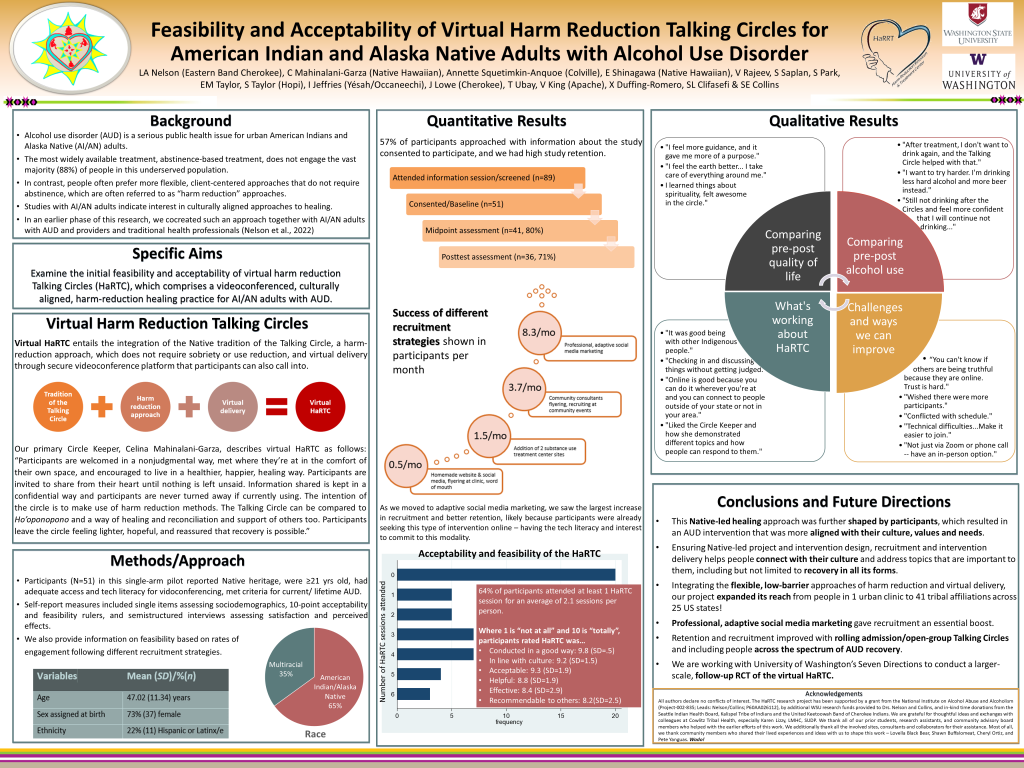
Our first publication from this phase of the study can be found here.


